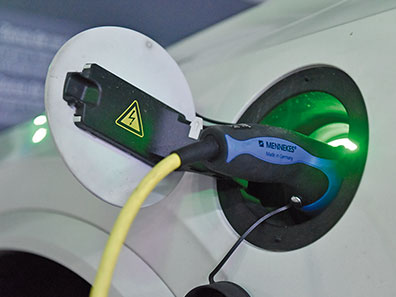
Saba identifies the environmental aspects deriving from its activity, by performing a thorough analysis on its process map, and measures their impacts through calculation of the carbon footprint according to internationally recognised standards and verifies that calculation by means of a qualified third party.
This exercise allows more appropriate targets to be outlined and actions to help combat climate change to be implemented.
Main initiatives
- Implementation of an energy efficiency system:
- System for consumption control by means of real-time monitoring of facilities (Spain, Italy, Portugal, Chile) and in operation in the rest of the countries.
-
Environment (ISO 14001) and, since 2018, Energy Management (ISO 50001) in Spain, Italy, Portugal, Chile and being implemented in the rest of Saba’s territories.
ISO 50001
First company to be certified in the sectorISO 14001
- Commitment to sustainable mobility through adaptation of spaces for vehicles of this type in the network car parks, as well as its own fleet.
- Deployment of efficient lighting systems. Switching lighting fixtures to programmable LED technology in Spain, Italy and Portugal, and being deployed in Chile.
- Training and awareness-raising of employees as regards sustainability and energy efficiency. In Spain and Portugal.
- Efficient management of hazardous and non-hazardous waste.
- Implementation of elements that reduce water consumption.
- Production of a manual incorporating eco-design into the construction method for Saba’s car parks.
- Renovation of more energy efficient ventilation equipment. In Spain, Italy and Portugal, and being implemented in Chile.



Carbon footprint
With the aim of understanding its environmental impact and to involve its stakeholders, Saba calculates and verifies the carbon footprint of its activity each year by organising the sources (consumption) into scopes, based on the degree of impact that the activity can have on these. The carbon footprint has been calculated since 2011 and verified since 2016.
- Scope 1: Fuel oil C, vehicle fleet diesel and refrigerant gases.
- Scope 2: Electricity consumption.
- Scope 3: Purchase of goods and services (water, paper, toner consumption), hazardous and non-hazardous waste, corporate travel and transportation and distribution.
As regards the services provided by Saba, the greatest environmental impact, corroborated by the calculation of the carbon footprint, is that deriving from electricity consumption (scope 2), which represents around 95% of Saba’s emissions.
As a new development, gas consumption was included in scope 1 in 2019 and the Czech Republic and Slovakia were included in the scope in 2020.

Emissions
The decline in activity caused by the COVID-19 pandemic substantially reduced both electricity consumption and consumption in transport and distribution, with this effect reflected in reductions in CO₂ eq in all scopes.



